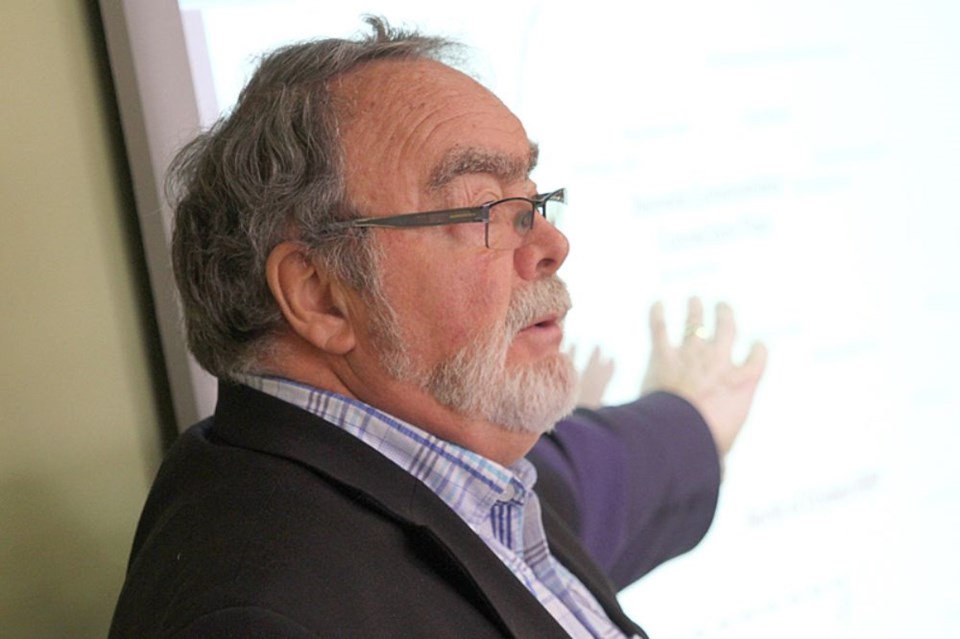THUNDER BAY -- The Ontario Power Authority is starting to come around, but Northwestern Ontario could find itself without enough electricity as early as next year.
Iain Angus, co-chairman of the Energy Task Force, says for that reason alone it’s imperative to convince the province and its subsidiaries to proceed with the conversion of the Thunder Bay Power Generating Station to natural gas.
Angus and the ETF met Monday with the city’s Intergovernmental Affairs Committee, showcasing projections that suggest running the plant on biomass will likely leave businesses and residents in the region facing rolling power outages if the demand can’t be met.
It’s time to put the gloves on and put up a good fight, Angus said.
It’s not just a question of maybe, he added, even with the addition of an east-west tie line.
“This is when we’re going to run out of power and this is when we’re going to need these facilities up and running,” Angus said.
“It creates a greater sense of urgency once we look at those kind of numbers.”
Using ETF projections, should the region face a drought, an occurrence that happens roughly every four years when El Nino strikes, it would not have the energy needed to meet demand in 2015.
As early as 2016 the region will require 85 MW of continuous power from the TBGS and by 2018 the requirement jumps 300 MW, along with 200 MW from the Atikokan Generating Station.
In a best-case scenario, with high-water conditions, the ETF projects by 2021 Atikokan will need to produce a continuous stream of 50 MW of electricity, while the TBGS will be required to produce 150 MW.
The province has agreed to convert the Thunder Bay plant to biomass, but only as a stopgap when power use hits capacity.
And, Angus said, the province has already cut its biomass order in half, from 15,000 tonnes to 7,500 tonnes.
That’s enough to keep the plant producing 150 MW of power for 31 days, or 40 MW for 122 days.
Angus says the good news is the province is starting to come around.
“The first time we met with them they were suggesting that the load growth in the Northwest would be something like 80 MW. We were saying it was going to be 700, 800 MW. And they’ve moved significantly and they’ve moved again in the last go-around,” Angus said.
“But we still disagree with them at the 2018 and beyond (projection) that we’re going to need much more power than they think we’re going to. And it’s our job to keep hammering at them to let them know.”
Angus said his urgency to hammer the message home results from the fact it will take at least two years to complete the TBGS conversion to natural gas.
Next steps involve an economic analysis of the conversion, a meeting with Northern Development and Mines Minister Michael Gravelle and a Nov. 26 presentation to the Northwestern Ontario Municipal Association.
The ETF is also hoping to meet with Ontario Power Generation CEO Tom Mitchell when he makes a public apology to Gull Bay residents next month and add the issue to the Ontario Good Roads Association agenda.
ETF member Rod Bosch said slowly, but surely, the OPA is starting to understand.
“They are very begrudgingly admitting we are right,” he said.
